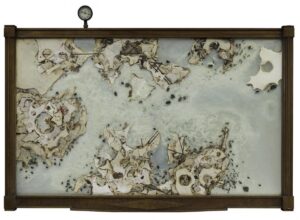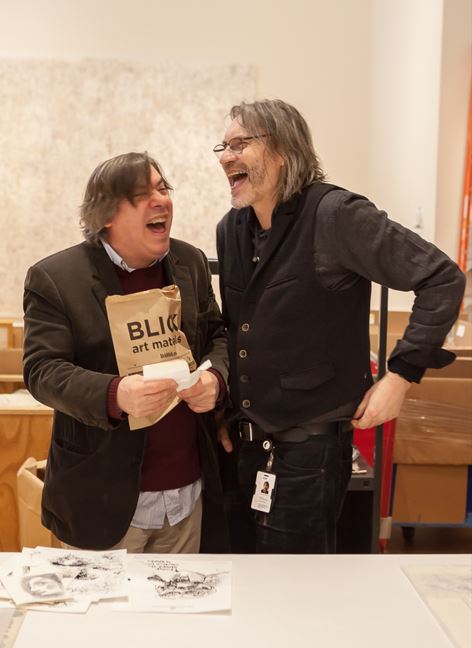Laure Veissiere is a Preschool/Pre-K teacher at Washington International School and participated in The Phillips Collection’s Summer Teacher Institute.
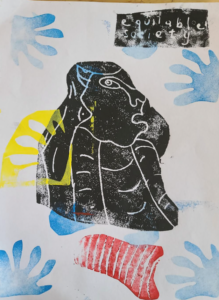
A print I created in the workshop about equitable society.
My interest in Art Integration started when I experienced my own limitations as a novice teacher, frustrations with some school systems and society as a whole, and the need to grow, collaborate, learn, and change while working with an underserved population in Anacostia five years ago.
Art Integration has the potential to enhance academics, democracy, and humanity by engaging students in meaningful conversations and proposing an alternative to the violence of the current political and educational climate. To fight against the school-to-prison pipeline, enhance engagement, dismantle some systems of oppression, and decrease violence, Art Integration practices have led to a culturally relevant approach to education.
The Summer Teacher Institute at the Phillips was pivotal in thinking about how we bring our own meaning to our classrooms, our artmaking practices, and our communities of teachers and communities of origin. It got me thinking about how our students can make meaningful connections with each other through art. Also, it allowed me to examine how using art in the classroom can support me in recognizing my own biases and the meanings students bring with them from their own backgrounds and experiences.
Phillips educators had us undergo a process of self-reflection by looking at ourselves, our values, communities, and interests as they transpire into the class. The Phillips Collection Head of Teaching & Learning Hilary Katz, said, “While looking at your personal identity, it is important to be clear about your position (your perspectives, power, and identities) when teaching an arts integration lesson to students.”
During one of our arts integration lessons, we recreated a work of art as a way to confront our biases in the process.
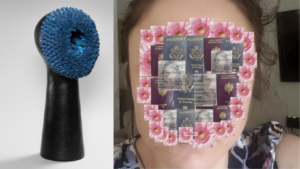
Simone Leigh, No Face (Crown Heights), 2018; My recreation of No Face.
I was drawn to reproducing the artwork by Simone Leigh because I connected to the feeling of discomfort that I felt when looking at it. I learned that she explores historical and contemporary racism in the United States. I connected to the feeling of struggle and the “subjective experience” I felt as a first-generation American woman. Looking deeper at my identity and funds of knowledge by closely looking at my communities of origins made me realize how the meaning we each bring to the classroom impacts our teaching.
Also, this workshop allowed me to think differently about the process of curating as a meaningful creative process and think about ways I could apply it in the class with some original students’ work.

In small groups, we curated the teachers’ recreations of Phillips’s artworks.
This workshop was instrumental in recognizing my power as an Artist, educator, curator, and leader in my communities. By selecting, encouraging voices, validating students’ confidence, scaffolding talents, creating meaning and culture through inquiry, and building the classroom fund of knowledge, teachers and artists can motivate and change their communities.
Making my own prints and reflecting on their meaning made me think about what kinds of communities come together in my classroom.
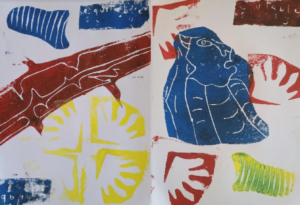
My seven-word story about my prints: Communities are powerful when they value education.
This workshop made me look back at my values, my bias, and my commitment as a teacher and artist to nurture the potential in all human beings. Culture is something that is intangible and inseparable from the experience; it is flexible and always interchangeable. Hilary Katz said, “Culture is not in a box.” Culture and funds of knowledge are fluid, always changing and evolving.
Just like artists influence their communities, teachers have transformative powers. They are agents of social change in their communities because they support and nourish their students’ voices and talents and help them recognize their knowledge, cultures, and funds of knowledge.

